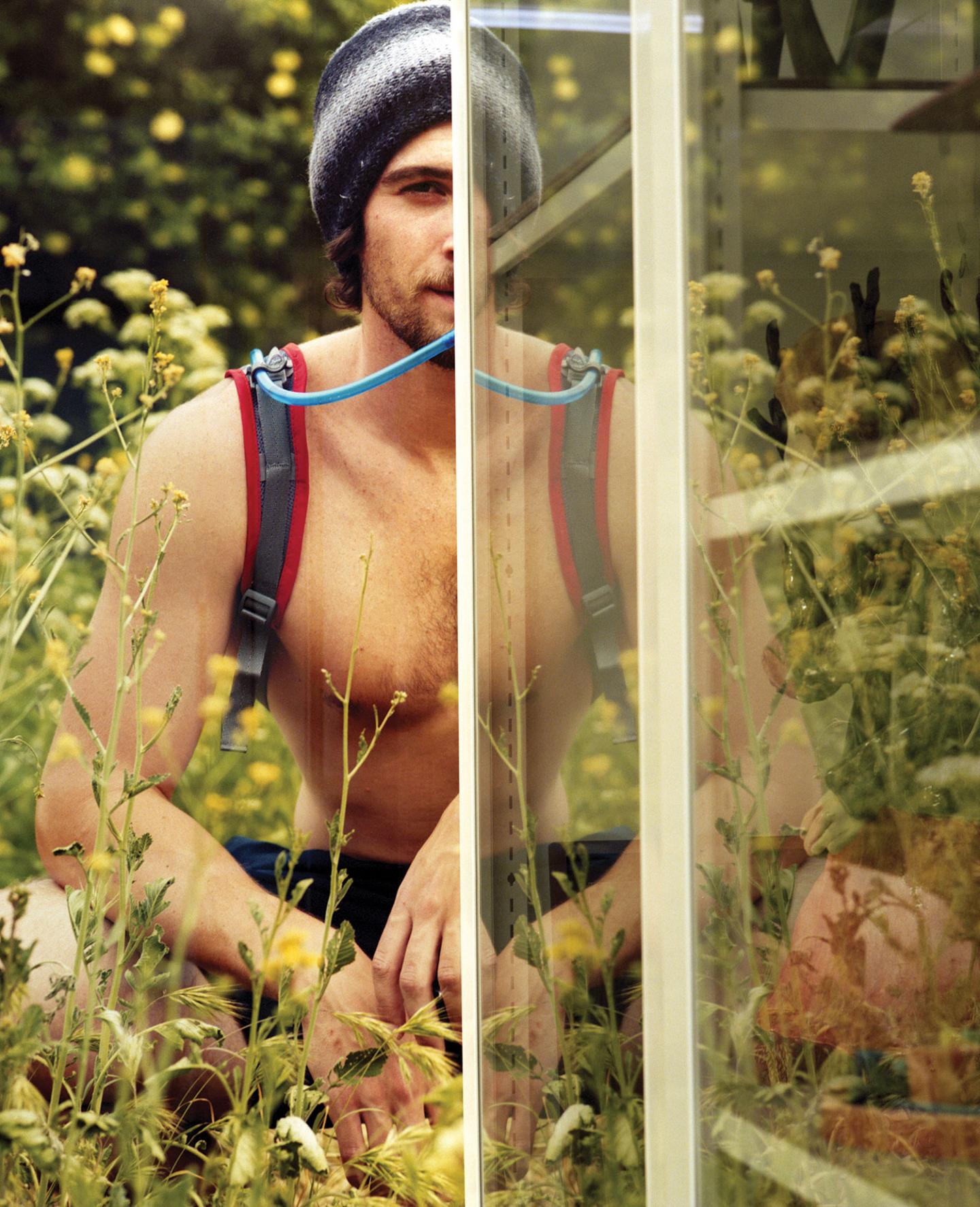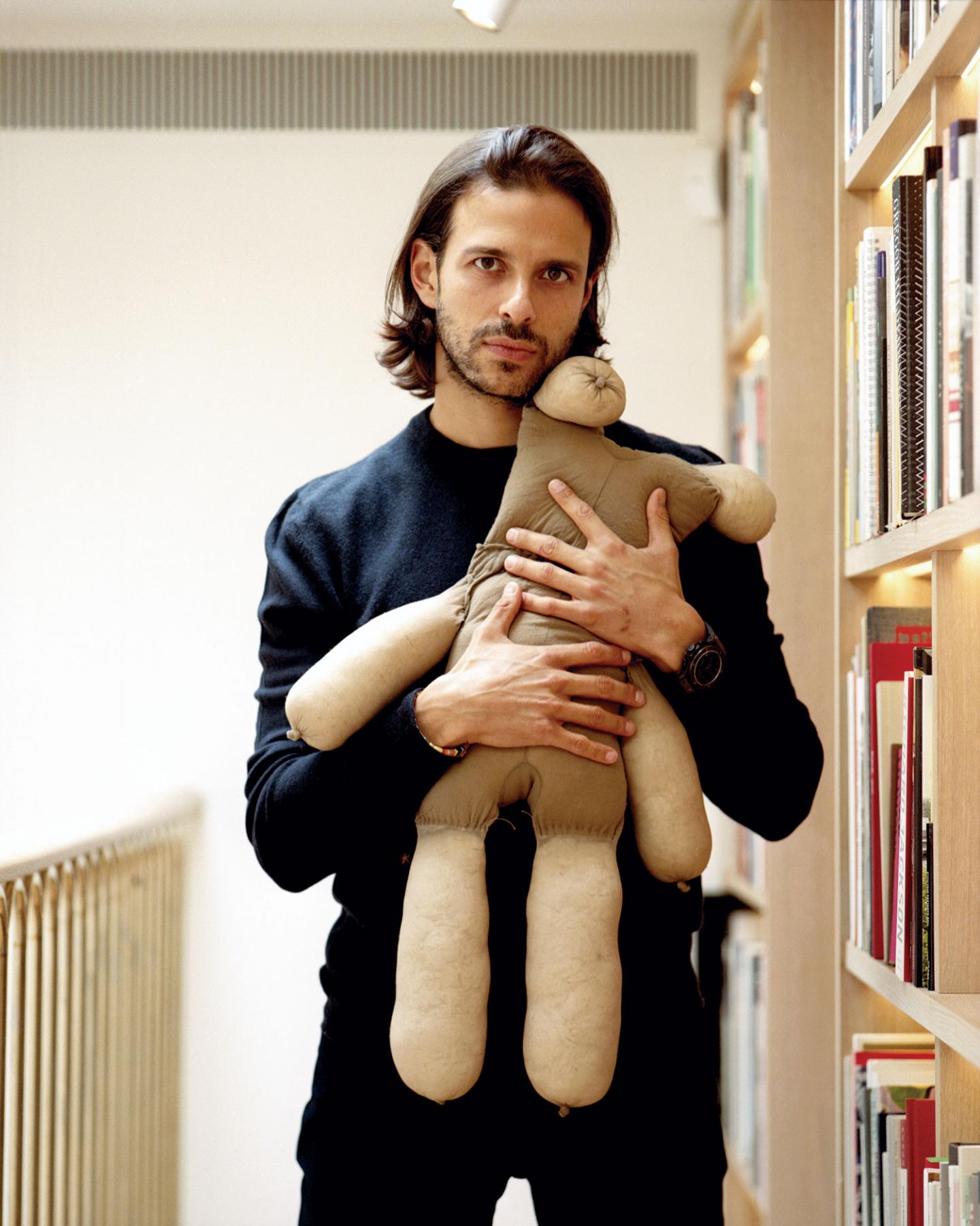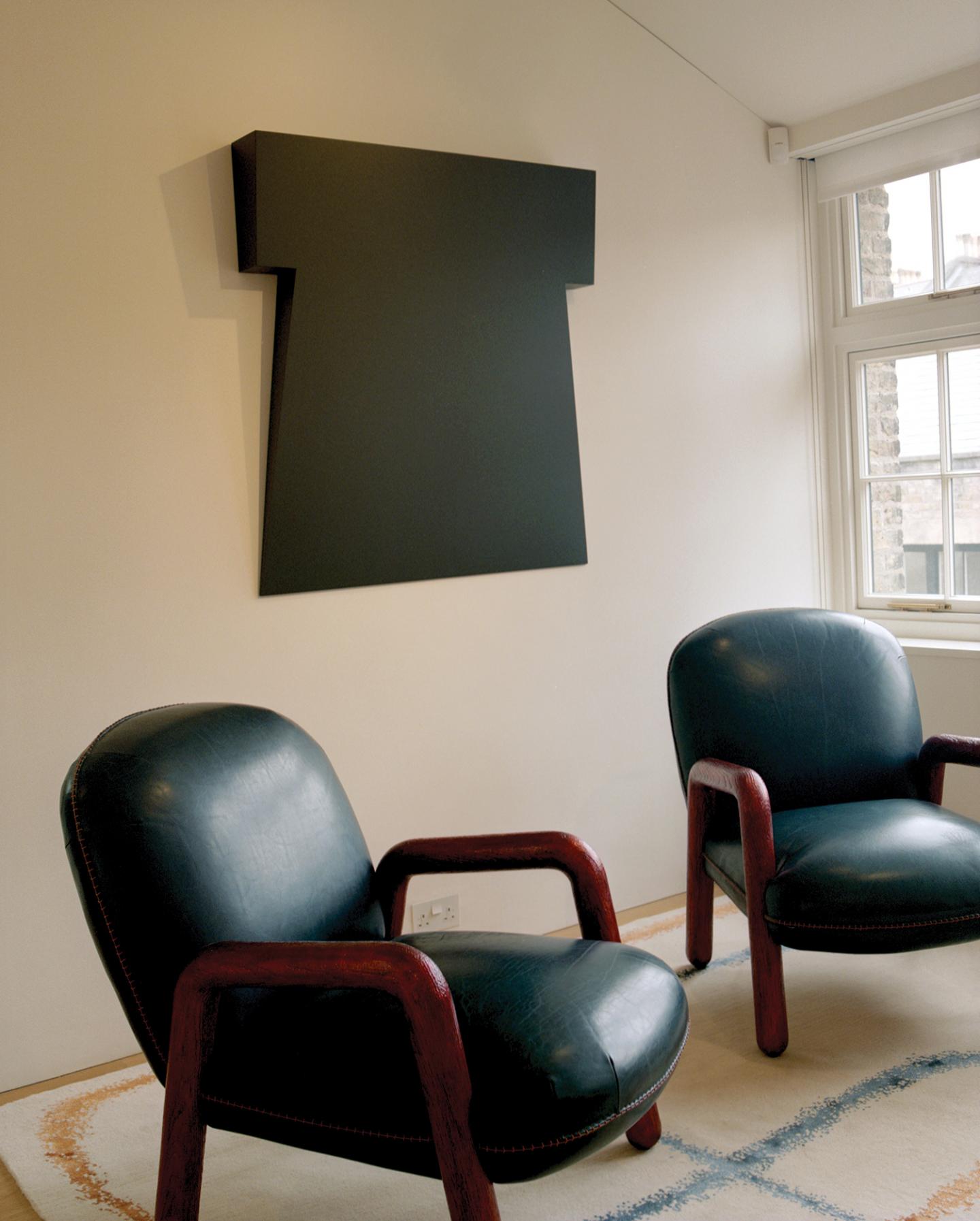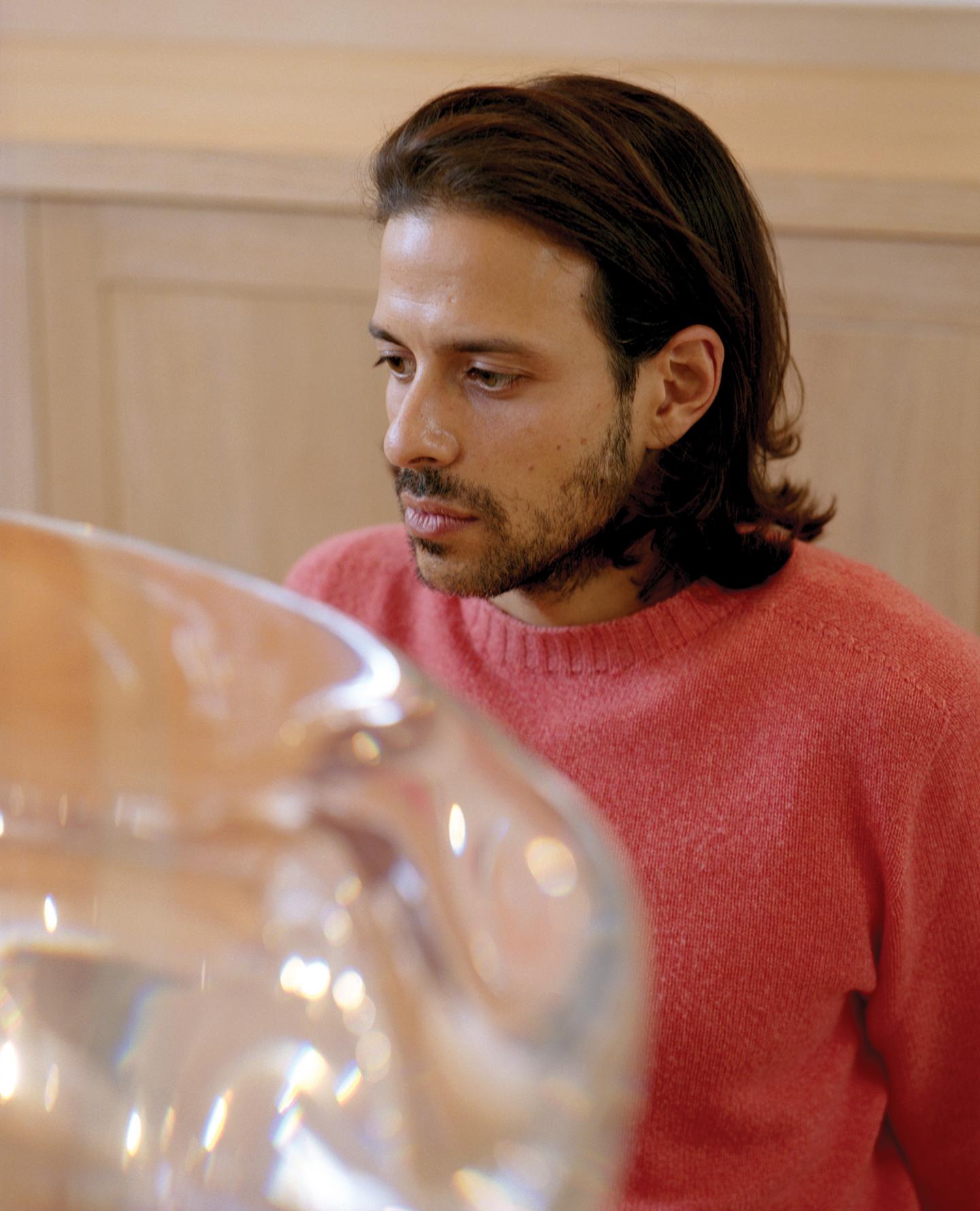Alex Petalas Embraces the Intimate
From Swatches to Sarah Lucas, the founder of London’s The Perimeter on forming his collection – and why you won’t find him in a gallery’s DMs
From Swatches to Sarah Lucas, the founder of London’s The Perimeter on forming his collection – and why you won’t find him in a gallery’s DMs

Matthew McLean: Where does your journey to art begin?
Alex V. Petalas: Perhaps differently to other collectors as my parents did not collect. After studying Classics at Brown University in the States, I moved to London where I studied law and qualified as a solicitor. I had a number of friends in London who would take me around to galleries and museums. It was a different landscape, then, there weren’t as many contemporary galleries as there are today. Still, it took me time to absorb it all, to gain knowledge and become informed. There were some amazing shows which have stayed in my mind, like Phyllida Barlow’s first exhibition at Hauser & Wirth in 2011 — the old Hauser, on Piccadilly. Well, fast forward to my first acquisition from an Eva Rothschild show at Stuart Shave’s. There was one piece left: a sculpture called The Perimeter (2009) which I fell in love with. I just went for it. I was a little naïve in that I had it delivered to the house and I thought I would carry it up the stairs myself: it weighed 60 kilos! I managed to install it in my sitting room and I lived with it like that for many years. So that was my first acquisition, and it gives its name, of course, to the space today.
MM What led to the timing of the acquisition — why that work, why then?
AVP: I was very curious, and I had been wanting to start acquiring work for a while at that point, but I wanted to be well informed before I did. So when I made that first purchase, which was a big purchase for me, it was really a result of thinking a lot about the artist, doing my research, and conversations with the gallery — it was also a way for me to learn about other artists in the gallery’s programme and start a relationship. The ‘collecting’ aspect came later, over time.
I’ve always been a collector at heart. I collected so many different things since I was very young: stickers, basketball cards. I have over a thousand Swatches — back in the day, they used to do artist collaborations, you know? There’s a Keith Haring Swatch and a Picasso Swatch, and a Nam Jun Paik collaboration, which plays music. It all comes back to me, really fondly, 30 years later. I’m going to have my Swatches moved to a specially made storage in The Perimeter someday soon.
MM: You should do a show of all the art Swatches — paired with works by the artist.
AVP: Yes… maybe.

MM: Who are the other artists who you feel anchor the collection or represent its character today? Have your tastes developed over time?
AVP: When I started living in London, there was a whole group of younger London based artists who I identified with: Allison Katz, Helen Marten, Prem Sahib, Daniel Sinsel — I see them as a generation, the same generation as me, along with people working beyond London like Camille Henrot. I’ve supported them and continue to support them. But I also collect older and more established artists: Tomma Abts, Sarah Lucas, Laura Owens, Steven Shearer, Wolfgang Tillmans, Christopher Williams. The number of works by each artist in my collection varies, but they are very important to me.
MM: Besides artists, have there been any individuals who have helped shape your collection or guided you on your journey?
AVP: Yes, there were two. I think you need a bit of help, when you’re starting out. Collecting is not as simple as walking into a gallery. So when I started to get more serious, I began working with two advisors: Prue O’Day and Anatol Orient. Their insight and knowledge taught me a lot — how the art world works in certain ways, as well as how to look at things. They held my hand at first. If I hadn’t been with them, the way I collect might have been very different. Prue’s operation is small: she has three clients, two when I was working with her, and she’s quite old school in valuing good relationships and building on them. The way I collect is perhaps closer to an older style of collecting.
MM: In what ways?
AVP: Relationships with galleries are very important to me. I’ve never sold an artwork and I never buy with that intention. I very rarely buy from jpegs. Some collectors are quick to jump on something exciting or an artist in high demand just from a PDF without seeing the art in person, but I never rush to buy things like that. My mantra is: wait and see. The experience of art is very important for me, and it has added a lot to my life. And if there’s a rush or pressure is being put on me, I say to myself ‘there will always be more’. I may have missed some things, but I am happy with the way things have gone.

MM: So how often would you say do you go to see a work and then actually decide, having spent time with it, to pass?
AVP: Well, I usually get a sense of the things I’m going to be excited by. So I would say it’s 75% to 25%.
MM: Are there any figures who’ve provided inspiration: collectors you look up to or aspire to emulate?
AVP: I wouldn’t say ‘emulate’. What Bob Rennie has done as a collector is very interesting: he has a space in Vancouver which, similarly to The Perimeter, is open only by booking. He’s working at a much bigger level than I am, but I admire how he emphasizes the small-scale, real encounter. He’s a very impressive collector but he’s also a low key guy. Again, it’s old school.
MM: So where did the inspiration to open The Perimeter come from?
AVP: I actually never had the dream of opening a space for visitors, but it happened very organically. As I got more and more into collecting, I was amassing works. But I don’t like overhanging, so a lot of them were going into storage, especially bigger sculptures and installations. I was looking for an office space, and it occurred to me it would be really cool to go to the office every day and bring works out of storage there to enjoy. To bring things to life a little bit more.

MM: So what is now The Perimeter was originally intended to be a purely private space.
AVP: Correct. But eventually, I thought: if I’m enjoying seeing this work so much, others would too. And so they should be welcome to come and look at it. I decided to open one day a week, and I would give the tour myself on a Thursday at 11am. I did that because it’s a very inconvenient time, so I thought ‘if people turn up then, it’s because they really want to come’. Soon, I found I was fully booked every week, so I added self-guided tours on Fridays.
MM: How did you find giving guided tours?
AVP: It was stimulating. Sometimes people ask me questions that I have never thought of: you have new conversations, new questions, ideas. And witnessing how visitors react to the work is fascinating. To see what people think. Makes you quite vulnerable.

MM: How did you approach the architectural conversion of the building?
AVP: I didn’t really know any architects when I set out, so I asked Sadie Coles and Toby Webster of The Modern Institute for suggestions. Independently of each other, they both suggested 6a architects. I looked them up and I realized their offices were two roads down from us. I had a meeting and I liked their aesthetic. We took out some ceilings, and dug down to create two basements. The storage system there was inspired by the Picture Room in Sir John Soane’s Museum and rolling racks in the V&A’s storage facility. They really understood how to make these spaces — once an old mews house and a warehouse — as open as possible, and connected as possible. My father is also an architect and it was a huge blessing having his advice and input throughout.
MM: You decided to have two works permanently installed in the space: an illusionistic window by Prem Sahib in the bathroom, and a Susan Philipsz sound piece which is connected to the front door…
AVP: Yes, I thought it would be interesting to have artworks built into the DNA of the building. I asked Prem Sahib, who I’d collected a lot of work by already, if he’d like to contribute something: and I gave him free rein. I think Philipsz’s work is fascinating and I was fortunate enough to be put in touch with her and commission something. It’s her singing two notes. Because I am often here on my own, there’s a speaker at the very top of the building — so I can hear the piece when someone arrives — and a speaker at the bottom; and the sound converges in the middle of the staircase.

MM: How has the programme of temporary exhibits developed?
AVP: At the start it was a chance to bring works out of storage, to see and enjoy them, so we did group exhibitions of works from my collection. And then over a year ago, I got interested in finding ways to still highlight works from the collection but also bring more work in the space and give a bigger remit for artists’ expression. I approached Ron Nagle, who is someone I collect in depth, with the idea of a solo exhibition: a combination of works in my collection and loans from him. It was a labour of love: Ron is in his 80s now, and I was liaising with them across time zones, creating and borrowing all kinds of niches and plinths to show the work on. It was Ron’s first non-commercial show in London ever. One of the ways to go forward is to focus on artists who haven’t had the chance to show in London so much. We are opening Carmen Herrera now, and she hasn’t had a non-commercial show in this country in over a decade; London means a lot to her and she is very excited. She sent us a very nice note.
MM: Has your personal experience viewing art influenced the visitor experience at The Perimeter? Were there any inspirations you took from other collections or art spaces?
AVP: Experience is the word: experience is key. I’ve had some very moving moments encountering certain artworks, too many to list, though Naoshima, in Japan, stands out. I love Japan: my dog’s Japanese. I wanted this space to be unique and different, and to feel special. I wanted there to be a very homely feel, very personal. It is anchored in my personal collection: it’s an invitation to experience what I enjoy. Visitors are asked to remove their shoes when they arrive. That’s because, when I get home, I always take my shoes off; it’s just what I do. When I used to give guided tours, I’d be in my socks as well. We keep visitor numbers at any time small: there’s a maximum of eight people an hour visiting — six now due to the current situation — which we allocate through the booking system. It allows contemplation. It’s not a place for crowds. I am there myself most days, and it feels like a second home. Although there isn’t a bed.

MM: Aspects of your model — booking only, small groups, and long-running shows — are starting to look like the new normal for art spaces in the wake of COVID-19. How do you think the pandemic will affect the operation in the future?
AVP: Because of our model, as you say, we’ve been quite well prepared: we already had an online booking system, and only a minimal number of bookings per hour. Actually, we’re extending our hours: for the first time with this show we’re going to open over the weekend: every second Saturday. I wanted to give people a bit more of a window of opportunity to see the show. We’ve only just opened bookings for Carmen’s show but they are steady. I think in the long term people will still have the appetite to view art. I know that I do.
MM: How did the pandemic affect your engagement with art?
AVP: Because one of my rules has always been seeing art in person before acquiring, I really haven’t been able to engage as much during lockdown. Not being able to engage with my true passion, I felt I was losing that important part of my life. After about a month of looking at things on PDF only, I decided to make some acquisitions but it was hard for me, going against what I believe in. So I went through ups and downs a bit. In the end, I was glad that I had my rule in place and stuck to it. Everyone was getting bombarded for a while and it can get overwhelming quickly.
MM: Some people in this time have been discovering artists through Instagram — has that been a useful platform for you?
AVP: I’ll be honest with you: no. I’m quite cynical about people trying to sell art on social media. For me, I value research and learning and going into galleries and speaking to gallerists. As opposed to that feeling that I have to rush to ‘DM’ an artist or a gallery about a work.

MM: So have you acquired anything during or since lockdown?
AVP: One important recent acquisition for me was a Sarah Lucas sculpture, from a new series of soft sculptures —she’s sort of revisiting the bunny sculptures she made in the late 1990s and reworking them, taking them to the next level. I love her work. Her show at Sadie Coles HQ, ‘HONEY PIE’, was the last show I saw before lockdown started, and after it lifted, the first show I went back to. I just wanted to see it again, and it was so nice to be back with art. I feel like now, whenever I go into a gallery, I find myself smiling. Like just being able to go and get my coffee again makes me happy. Little pleasures.
MM: Speaking of pleasure, if you had to persuade someone who had the means to begin collecting, how would you express the satisfaction it offers?
AVP: I hate telling someone ‘you should get this, or buy that’. You have to have the desire to do that yourself, it has to come from inside you. But if I was able to convey it somehow, it would be for the joy you can get every single day living with art, moments of happiness to forget whatever else is going on in the world. Living with art is infinitely rewarding but also comforting, safe and familiar. But you won’t realize that unless you do it.
Main image: Alex Petalas in the library at The Perimeter, London, September 2020, holding Sarah Lucas’s Tit Teddy (2012). Photograph: Kuba Ryniewicz

























